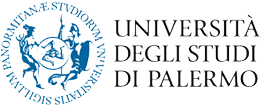The Normative Surge of the 13th Century: A Change in the Relationship to Law?
This text serves as an introduction to the section on secular legislation and the new normative dynamics emerging in the late Middle Ages, particularly during the 13th century. It explores the shift in legal culture and the evolution of normativity, presenting the historical, conceptual, and methodological framework for analyzing the legislative practices of this transformative period.
Loi, norme, normativité (Law, Norm, and Normativity)
The introduction argues that understanding medieval normativity requires distancing oneself from modern legal definitions and frameworks. Unlike contemporary law, medieval legal systems lacked generality, permanence, and hierarchical coherence. Instead, they were characterized by fragmented juridical orders, plural sources of authority, and diverse norms addressing different societal groups (e.g., clerics, nobles, bourgeois). For instance, the Siete Partidas demonstrates how legislative texts operated effectively despite the absence of formal promulgation procedures. The text advocates for a focus on "legal norms" rather than "laws" to avoid anachronistic assumptions.
Production normative et institutionnalité (Normative Production and Institutional Structures)
Medieval normativity challenges the modern assumption of a separation of powers. In the medieval context, power was defined by legitimacy and intensity rather than functional distinctions (legislative, judicial). Normative interventions often blurred the lines between legislation and casuistry, as seen in Roman imperial rescripts. This fluidity complicates the strict categorization of legal texts into modern frameworks of "legislation" and "judicial decisions."
Application et effectivité (Application and Effectiveness)
The text delves into the issue of legal norms’ effectiveness, examining the relationship between law and social reality. Two schools of thought are contrasted:
- Positivist or Dogmatic School: Emphasizes the validity of law as self-contained, independent of its social implementation.
- Sociological School: Focuses on the social realization of norms, measuring their "effectiveness" by their degree of implementation and societal impact.
Effectiveness is further divided into:
- Application (Effectivity): Alignment between norms and their enforcement.
- Utility (Efficiency): Achievement of the intended goals of the norms, such as social reforms or behavioral changes.
La conjoncture inédite du second Moyen Âge (The Unique Context of the Late Middle Ages)
The 13th century is identified as a pivotal period for legal innovation, marked by a "normative push." Several converging factors include:
- The centrality of Roman law, either directly or through canonical mediation.
- The growing ambition of legislative texts, exemplified by works like the Siete Partidas and the Liber Augustalis, which sought to legislate comprehensively.
- Efforts to make legal norms accessible, including vernacular translations of texts previously reserved for Latin.
Précisions liminaires (Preliminary Clarifications)
The introduction outlines the scope and limitations of the chapters that follow, focusing exclusively on secular legislation. Ecclesiastical law and English common law are deliberately excluded, as they are explored in other sections of the handbook or existing literature. This section instead emphasizes continental developments, particularly in France, Italy, and Poland, where the "normative turn" of the 13th century had profound legal and societal implications.
Conclusion
This introduction establishes the historical and conceptual foundation for understanding the legislative practices of the late Middle Ages. By reframing the study of medieval normativity within its historical context, it provides a lens for analyzing the chapters that follow, which explore diverse legal traditions and the broader impact of the 13th-century "normative push."







